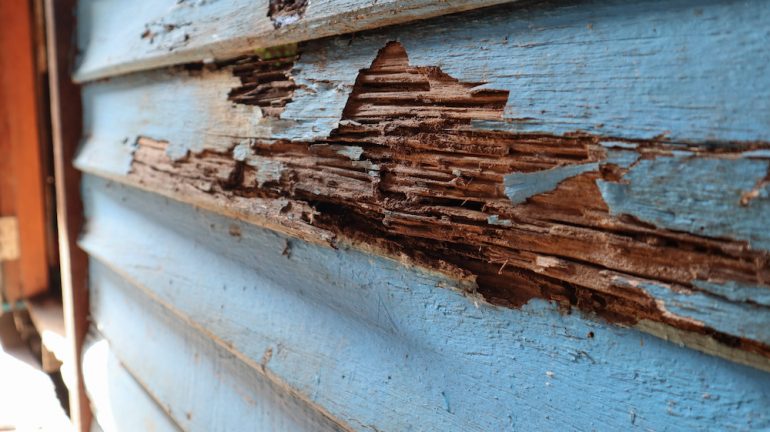Water is essential to life, but water in the wrong places around your home can wreak destruction. Interior framing, eaves, window frames — all of these and more are subject to wood rot and can be expensive to repair. Here’s how to spot, fix and prevent damage around your house.
Where wood rot occurs
When water penetrates wood where it shouldn’t, it causes rot and often mold. Rainwater can penetrate unsealed trim boards in the eaves of the house and around window or door frames. Pipes in walls can leak, as can basements. If the area where water touches wood is inside a wall or in a rarely seen corner of the attic or basement, the wood rot can go undetected and the damage can spread.
Types of rot
Rot is a breeding place for fungi that feed on the nutrients in the wood. There are three types of wood rot. Soft rot is the earliest stage of rot. It makes the wood spongy but does not immediately cause discoloration. Over time, brown rot discolors the wood and extracts all the nutrients from it. Wood with brown rot can appear to be dry and is sometimes mistakenly called dry rot. The third type of wood rot is white rot, which eats the cellulose and lignin in the wood, creating a whitish appearance.
Spotting and repairing wood rot
Wood rot can be obvious around a home’s exterior seams and edges as well as at the ends of boards. Old caulk can gap, allowing water to seep between boards. If the ends of boards are unpainted and come in contact with water, they will wick it up into the board. The soffit and fascia boards of a house’s eaves can rot when clogged gutters do not drain properly and water overflows onto the boards and soaks them.
When you see the telltale ragged edges and ends, use a sharp tool such as an awl or screwdriver to determine the extent of the wood rot. Push into the board starting at the visible edge of the rotted area and working away from it. Rotted wood will be soft, and the tool will push inward. Keep pushing until you reach an area where the wood is firm.
Once you’ve defined the extent of the rot, you must cut out the bad wood. Replace it with the same size and type of lumber. Caulk seams carefully, then apply at least two coats of paint.
If there is wet wood within an interior space, visibly inspect and again use your tool to test for softness. If there is minimal water damage, dry with a towel and open air for a couple of days. Then paint the interior portions with Kilz and let dry. Where damage to interior boards is more extensive, especially with framing boards, you may have structural damage. In this case, hire a professional to make the repair.
Prevention
Keeping rot from happening is always your best strategy. Do a visible inspection around windowsills, eaves and exterior trim work at the start of spring and fall, the wet months. Look for and replace gapping caulk. Keep gutters cleaned and functioning smoothly. From the ground using binoculars, inspect roof flashing on the roof, looking for loose pieces that could allow leaks into the attic.
Inspect the attic and the basement for signs of leaks, mold or rot. In attics with humidity higher than 50 percent, install a dehumidifier.
Install water detection alarms in the attic, basement and within cabinets and areas where the plumbing runs in adjacent walls. This will help you catch leaks early before they cause long-term water damage.
Related – Preventing Water Damage in Your Home


